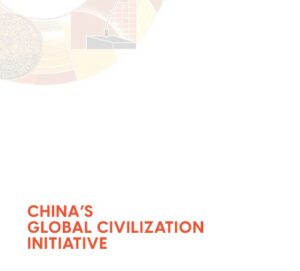Cultural and Educational Exchanges: Building Cooperation Between China and South Asia

Cultural and educational exchanges refer to the process through which people from different cultures share ideas, traditions, and research findings. The relationship between China and South Asia is not new; both have shared values, cultures, and ideas. Along with the Silk Road, Buddhism played a special role in building this connection. Various monks traveled to South Asia in search of knowledge such as Faxian and Xuanzang. In the globalized era, the relationship between these two regions has entered a new phase under China’s Belt and Road Initiative (BRI), which was introduced by the Chinese President Xi Jinping in 2013. Over the past two decades, China played an important role as a global balancer, not just heavily invested in regional economic and technological advancement but also represented an example of humanistic diplomacy.
In the 21st century, soft power, such as the promotion of cultural and educational exchanges, remains a central point of China’s foreign policy. China has established Confucius Institutes across the region, which serving as bridges between these two regions. There are five official Confucius Institutes currently working in Pakistani Universities: the University of Agriculture Faisalabad, the University of the Punjab, the University of Sargodha, the University of Karachi, and NUML. In Bangladesh, there are two Confucius Institutes, one of them at the University of Dhaka and another at North South University. Nepal has two major Confucius Institutes, one at the Tribhuvan University and another at Kathmandu University. Sri Lanka also has two Institutes, one at the University of Colombo another at the University of Kelaniya. There are no official Confucius Institutes in the universities of Bhutan, the Maldives, or India, but China is deeply involved in promoting peace and collaboration with these countries. Along with Confucius Institutes, tourism and media cooperation plays an important role in promoting peaceful cultural understanding. Areas such as Taxila in Pakistan, Lumbini in Nepal, Gaya in India, and Anuradhapura in Sri Lanka promoting the Buddhist sites tourism. Annually, the tourist traveling rate between the two regions is approximately 500,000. China also launched the “South and Southeast Asian Media Network” to build shared content and publications among media houses across South Asia. This network is very useful for the joint coverage of local stories to reach wider audiences. It helps to build mutual understanding rather than promoting one-sided narratives.
Beyond cultural exchange, educational exchanges also play a vital role in shaping young minds and developing political efficacy, which is very important for promoting a globally cooperative political culture. The Belt and Road Initiative (BRI) has played an important role in transforming China’s educational diplomacy towards Asia, especially South Asia. China provides large number of fully funded scholarships to the South Asian students annually, enabling them to study in major Chinese Institutions such as Shanghai Jiao Tong University, Zhejiang University, Wuhan University, and Tsinghua University. China’s educational exchanges in South Asia focus on joint research opportunities. Many universities in Pakistan, such as the Pakistan Institute of Development Economics (PIDC), Punjab University, and NUST, have signed Memorandums of Understanding (MoUs). Similarly, various universities such as Lumbini Buddhist University from Nepal, University of Dhaka from Bangladesh, and Colombo University from Sri Lanka have also signed MoUs. These initiatives enhance research cooperation and also provide young scholars with valuable exposure to the majors regional issues, which is important for overall regional development. Under the BRI Human Resource Development Cooperation Program (HRDC), China is working to promote technical and vocational training to the students.
No doubt, cultural and educational exchanges between China and South Asia are promoting peace and mutual understanding, but some challenges continue to affect their effectiveness. One of the major problems faced by South Asian students is social adjustment. Mandarin remains the dominant language in most Chinese universities, which creates a gap between local and international students. Another important problem is the regional conflicts, such as between Pakistan and India, China and India, and Pakistan and Afghanistan, which often influence the multilateral projects under the BRI. The third important challenge is the fear of China’s influence in the South Asian region. Public often associate Confucius Institutes with China’s soft power tool.
In South Asian region, China is trying to solve issues such as social adjustments, regional conflicts, and fear of Chinese influence. The issue of social adjustment can be resolved by addressing the language barrier. The language gap can be bridged through language training sessions within host universities. Although some notable universities, such as Tsinghua University and Peking University, already provide language support, these initiatives should be across all universities. The second issue of regional conflicts can be solved through the use of regional platforms such as SAARC. China should use this platform to build trust among countries in the region, building trust will ultimately leads to multilateral projects. The third issue is fear of Chinese influence in the region. Although most cultural and education programs are managed jointly, but misunderstandings arise due to the lack of awareness and media misunderstanding. China can solve these issues by increasing the level of transparency to improve overall confidence of the public.


